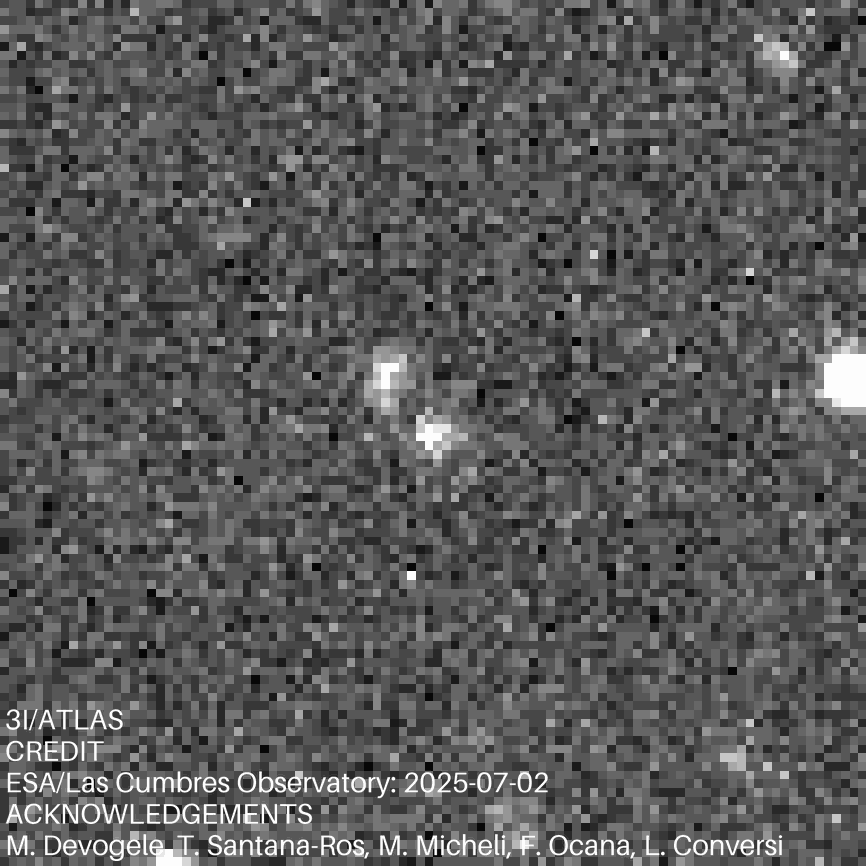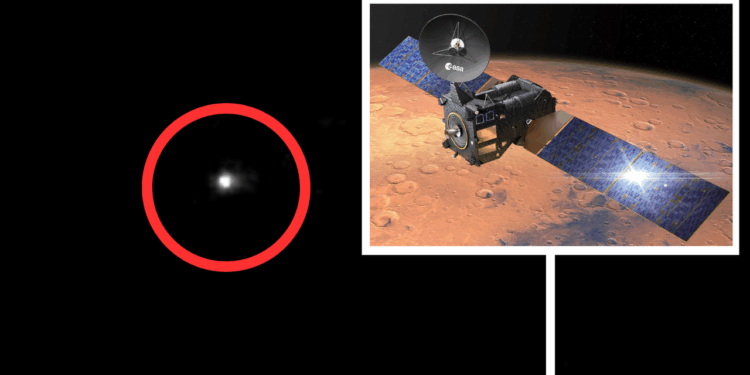The path of comet 3I/ATLAS through the solar system has been predicted with an accuracy 10 times greater than previous estimates, thanks to images taken by a European Space Agency spacecraft orbiting Mars. Though 3I/ATLAS poses no threat of striking Earth, the breakthrough could have important implications for defending Earth against other comets and asteroids someday.
The ExoMars Trace Gas Orbiter (TGO) spacecraft observed 3I/ATLAS between Oct. 1 and Oct. 7 as it passed relatively close to Mars, with the comet’s closest approach bringing it to within 18 million miles (29 million kilometers) of the Red Planet on Oct. 3. Up until September, calculations of the location and trajectory of 3I/ATLAS relied on observations made by Earth-based telescopes. Scientists did expect a modest improvement in the accuracy of locating 3I/ATLAS with the addition of Mars-based data, but this addition actually yielded a tenfold improvement.
“The Mars probe got about 10 times closer to 3I/ATLAS than telescopes on Earth, and it observed the comet from a new viewing angle,” the European Space Agency (ESA) wrote in a statement. “The triangulation of its data with data from Earth helped to make the comet’s predicted path much more accurate. Because 3I/ATLAS is passing through our solar system fast, traveling with speeds up to 155,000 miles per hour (250,000 kilometers per hour), it will soon vanish into interstellar space, never to return. The improved trajectory allows astronomers to aim their instruments with confidence, enabling more detailed science of the third interstellar object ever detected.”
To image 3I/ATLAS, ExoMars TGO turned one of its instruments, CaSIS (Colour and Stereo Surface Imaging System), which usually surveys the surface of the Red Planet in high resolution, toward the stars. The planetary defense team at ESA’s Near-Earth Object Coordination Center accounted for the location of the ESA spacecraft around Mars to ensure it captured footage of 3I/ATLAS.
This special consideration was necessary because observations of comet/asteroid trajectories are usually made using observatories in a fixed location, such as by Earth-based telescopes, or from orbit around Earth, such as the James Webb Space Telescope (JWST).
Accounting for ExoMARS TRO’s special location, exact position around Mars, and the speed at which it orbits the Red Planet, the planetary defense team, with aid from ESA flight dynamics and science and instrument teams, was able to use data from the spacecraft to calculate the future locations of 3I/ATLAS, or its “ephemeris.”

The data collected by ExoMars TRO represents the first time that astrometric data, or measurements of the position of a celestial object, have been collected and submitted to the Minor Planet Center (MPC) by a spacecraft orbiting another planet. The MPC is a hub of asteroid and comet observations from a range of observations, radar stations, and spacecraft.
That is a big deal for planetary defense.

“ESA routinely monitors near-Earth asteroids and comets, calculating orbits to provide warnings if required,” the space agency wrote. “As this ‘rehearsal’ with 3I/ATLAS shows, it can be useful to triangulate data from Earth with observations from a second location in space. A spacecraft may also happen to be closer to an object, adding even more value.”
This isn’t the last time that 3I/ATLAS will be observed by a distant spacecraft, either. The interstellar comet is currently being sped by JUICE (Jupiter Icy Moons Explorer), which is bound for the Jovian system. Catching 3I/ATLAS immediately after its closest approach to the sun, JUICE is likely to get the best view of 3I/ATLAS during the interstellar comet’s active phase as radiation from the sun is causing it to expel material.
However, because this spacecraft is currently on the other side of the sun from Earth, the JUICE observations of 3I/ATLAS won’t be available to scientists until Feb. 2026.
